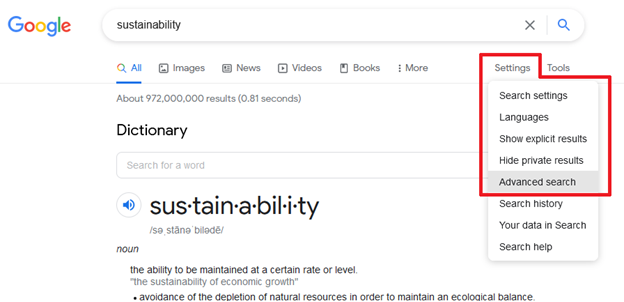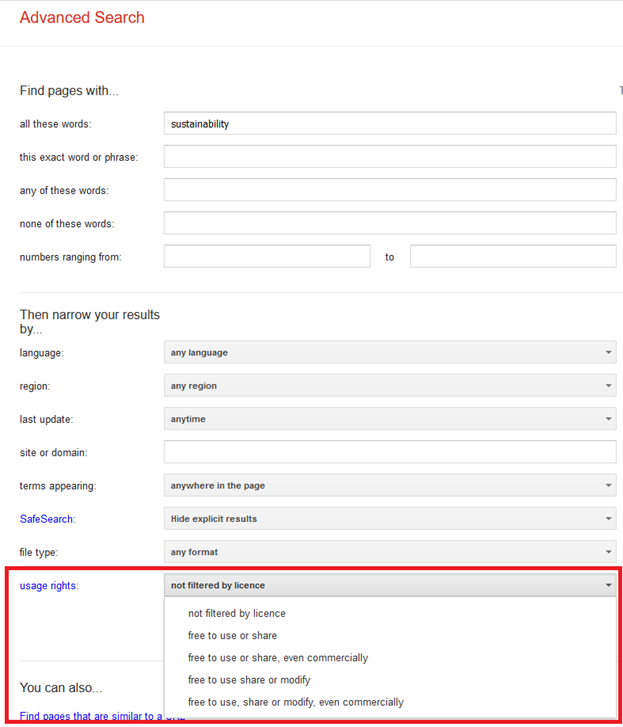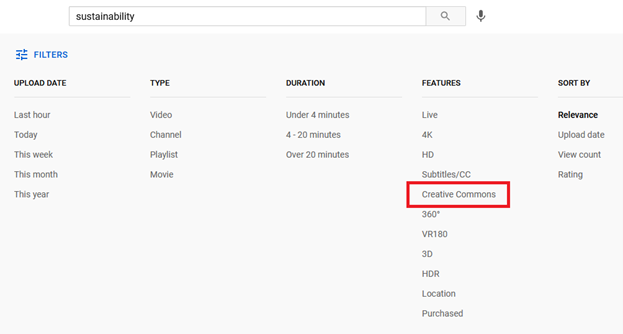Module 2 – Finding OERs
Learning Objectives
At the end of this module, you will be able to
- Plan your search
- Locate OER Repositories
- Locate specific types of materials
Using a search plan
Unlike libraries, where content is evaluated and curated from a set of items identified through publishers, open educational resources can be found everywhere and anywhere and have no set form of evaluation before they are made available to the public. This lack of evaluation makes developing a search plan very important.
Before beginning your search for an open education resource, you need to have a clear plan. This will help you make decisions on what tools to use for searching, the kind of resource you select, and the subject coverage. The following checklist will help you plan your search strategy as well as help you identify whether a resource will suit your needs:
Audience
- Who will be using the resources?
- Is the resource at an appropriate education level for your audience?
Subject Coverage & Relevance
- Does the information directly address one or more of the class objectives?
- Is there any area within the larger subject that should be excluded?
Material Type
- What kind of media does the collection contain (e.g. videos, podcasts, etc.?)
- What media types are excluded from the collection?
Pedagogical
- Does the resource encourage active learning and class participation?
- Does the information directly address one or more of the class objectives?
Accuracy & Production Quality
- Is the information accurate?
- Are there major content errors or omissions?
- Is the resource available in alternative formats (e.g. .doc)?
- Are the layout and interface easy to navigate?
- Do the design features enhance or inhibit learning?
- For image, audio, or video resources, is the picture/sound quality high?
Interactivity
- Does the resource encourage active learning and class participation?
- Are there opportunities for students to test their understanding of the material (e.g. a video with embedded questions)?
Licensing
- Does the license allow for educational reuse of materials?
- Does the license allow modifications or adaptations of the material?
Answering these questions will help you during your search by identifying different filters you can use to narrow your search results and evaluate the resources once the search results come in.
Take a moment
Which is the most difficult?
Places to search
OERs are usually found in repositories that specifically collect these resources together. There are a large number of OER repositories, and new ones are being created every day as people collect and organize resources specific to their needs.
The best place to start looking for resources is in a few of the largest and more comprehensive repositories.
Major Repositories
Mason OER Metafinder (MOM)
The Mason OER Metafinder searches across 21 different sources of open educational materials. It searches well-known OER repositories like OpenStax, OER Commons, MERLOT but also sites like HathiTrust, DPLA, Internet Archive and NYPL Digital Collections where valuable but often overlooked open educational materials may be found.
MERLOT
The MERLOT collection consists of tens of thousands of discipline-specific learning materials, learning exercises, and Content Builder webpages, together with associated comments, and bookmark collections. These materials have been contributed by the MERLOT member community who have either authored the materials or who have shared existing open education materials. Materials in MERLOT are reviewed for suitability for retention in the collection. Many undergo the more extensive peer review process for which MERLOT is known. MERLOT has also added a “Smart Search” function which searches for OER at other libraries/repositories, and which can also search the web using a proprietary MERLOT user profile design to find the newest and most popular learning materials available.
OASIS
Openly Available Sources Integrated Search (OASIS) is a search tool that aims to make the discovery of open content easier. OASIS currently searches open content from a large number of sources. At the outset, users can start a search if they know what they’re looking for, or they can view the variety of OER source types available to them—textbooks, courses, interactive simulations, audiobooks, and learning objects are just a few of the tools one can look for.
OER Commons
OER Commons offers a comprehensive infrastructure for curriculum experts and instructors at all levels to identify high-quality OER and collaborate around their adaptation, evaluation, and use to address the needs of teachers and learners.
Searching with Google
Another great place to start your search is through Google. Google’s Advanced search offers the ability to filter your search results by license.


Google offers 5 usage rights options that correspond to different Creative Commons conditions.
- Not filtered by license – This tells Google to ignore this filter and include copyright items in the search.
- Free to use or share – This includes items that have NC and ND licenses.
- Free to use or share, even commercially – This excludes items that have NC licenses.
- Free to use share or modify – This includes items that have NC licenses but excludes ND licenses.
- Free to use, share or modify, even commercially – This excludes items that have NC and ND licenses.
You can also filter image searches by license, which is found under “Tools”

Take a moment
What are the benefits and limitations of searching in a discipline-specific repository?
Finding specific materials
If you are looking for a specific type of OER, here are some good places to look.
Audio
- Big Sound Bank is a library of royalty-free, free of charge, and public domain sounds.
- Free Music Archive allows visitors to browse, listen and download music for free.
Data
- ABACUS Open Data Collection is a UBC collection of publicly available data including censuses and surveys.
- ArcGIS Open Data contains open GIS data from Esri.
- Open Data Network is a global search engine that allows you to search across tens of thousands of datasets from hundreds of open data catalogs.
- Open Government (Canada) has data from the Government of Canada.
Images
- Flickr allows you to search for CC-licensed images by using the “Any License” drop down menu. Flickr Commons contains public domain photography collections supplied by libraries and museums from around the world.
- The Noun Project includes nearly 3 million community-contributed icons.
- Unsplash contains over 1 million free high-resolution community-contributed images.
- Wikimedia Commons is a media file repository making available public domain and freely-licensed educational media content (images, sound and video clips) to everyone, in their own language. It acts as a common repository for the various projects of the Wikimedia Foundation, but you do not need to belong to one of those projects to use media hosted here.
Textbooks
- The BCcampus B.C. Open Textbook Collection is home to a growing selection of open textbooks for a variety of subjects and specialties. Discover open textbooks that have been reviewed by faculty, meet our accessibility requirements, and/or include ancillary materials (quizzes, test banks, slides, videos, etc.).
- InTech publishes Open Textbooks based on quality, peer-reviewed research in the sciences, social sciences, and humanities.
- The Open Textbook Library currently includes 683 textbooks, with more being added all the time. It is supported by the Center for Open Education and the Open Textbook Network.
- OpenStax publishes high-quality, peer-reviewed, openly licensed textbooks that are absolutely free online and low cost in print.
- The Pressbooks Directory provides an index of thousands of public books published across dozens of PressbooksEDU networks. This chapter will show how to navigate around the directory and find the resources you are looking for.
Video
- Vimeo is a video hosting, sharing, and services platform that has a large selection of Creative Commons videos with a variety of CC licenses.
- Youtube allows you to filter by Creative Commons licenses (reuse only)

Take a moment
How can you incorporate searching for open materials into your current methods?
Module quiz
Test your knowledge about OER repositories.
Summary
Adaptation statements
This module adapted content from:
- Open Education – Finding Libguide by UBC Library, licensed under CC-BY

